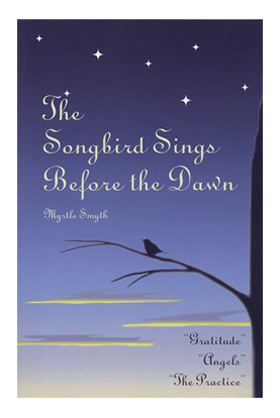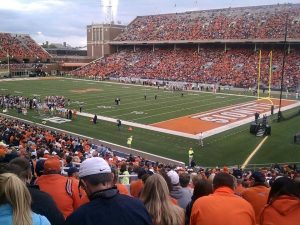In the ever-evolving landscape of US Trending News, one topic that consistently captures public interest is the natural world, particularly the intricate and melodious lives of songbirds. From the bustling cities to serene woodlands, these avian wonders are not only a source of beauty but also vital players in maintaining ecological balance. As we delve into this article, we’ll explore the behavior, habitat, and conservation efforts surrounding songbirds, shedding light on why they remain a significant part of current events in USA.
Understanding Songbirds: A Closer Look
Songbirds, scientifically known as Passerines, are a diverse group of birds characterized by their complex vocalizations. These birds are found in nearly every corner of the United States, from urban parks to remote forests. Their songs serve multiple purposes, including communication, mating, and territorial marking. With over 50% of all bird species falling under this category, songbirds play a crucial role in the ecosystem.
Physical Characteristics of Songbirds
Songbirds exhibit a wide range of physical traits, making them easily identifiable. They typically have:
- Strong, agile feet for perching
- Specialized vocal organs allowing for intricate songs
- Varied plumage ranging from vibrant colors to more subdued tones
These characteristics enable them to thrive in different environments, adapting to various habitats and food sources.
Habitat and Distribution
Songbirds can be found in diverse habitats across the United States, including:
- Forests: Providing shelter and food sources
- Grasslands: Offering open spaces for foraging
- Wetlands: Supporting a variety of insects and plants
- Urban areas: Thriving in parks and gardens
Each species has specific requirements for nesting and feeding, highlighting the importance of preserving these habitats.
Songbird Behavior and Ecology
Feeding Habits
Songbirds have varied diets that include seeds, insects, fruits, and nectar. This adaptability allows them to survive in different environments. For example:
- House Finches feed on seeds and fruits
- American Robins primarily consume earthworms and insects
Their feeding habits contribute to the control of insect populations, making them valuable allies for farmers and gardeners.
Reproduction and Nesting
During breeding season, songbirds engage in elaborate courtship displays to attract mates. Once paired, they work together to build nests, incubate eggs, and raise their young. Some species, like the Eastern Bluebird, prefer cavity nests, while others, such as the Song Sparrow, construct nests on the ground or in shrubs.
Migration Patterns
Many songbirds undertake long migrations, traveling between breeding and wintering grounds. This behavior is influenced by factors such as food availability and climate. For instance:
- Purple Finches migrate short distances depending on food supply
- Yellow Warblers travel from Central and South America to North America each spring
These migratory patterns highlight the interconnectedness of ecosystems and the need for global conservation efforts.
Conservation Efforts for Songbirds
Threats to Songbird Populations
Despite their resilience, songbirds face numerous threats, including:
- Habitat loss: Due to urbanization and deforestation
- Climate change: Altering migration patterns and food availability
- Predation: By domestic cats and other invasive species
Conservationists are working tirelessly to address these challenges, implementing strategies to protect and restore habitats.
Successful Conservation Initiatives
Several initiatives have shown promise in conserving songbird populations:
- Habitat restoration projects: Creating green spaces in urban areas
- Bird-friendly practices: Encouraging the use of native plants and reducing pesticide use
- Public awareness campaigns: Educating communities about the importance of songbirds
By supporting these efforts, individuals can contribute to the preservation of these remarkable creatures.
The Role of Songbirds in Ecosystems
Pollination and Seed Dispersal
While not the primary pollinators, some songbird species contribute to pollination by transferring pollen between flowers. Additionally, they aid in seed dispersal by consuming fruits and excreting seeds in new locations. This process helps maintain plant diversity and supports the regeneration of vegetation.
Pest Control
Songbirds play a critical role in regulating insect populations. By preying on pests such as caterpillars and mosquitoes, they help prevent outbreaks that could harm crops and natural landscapes. This natural form of pest control is essential for sustainable agriculture.
Indicator Species
Songbirds are often referred to as indicator species, meaning their populations can reflect the health of an ecosystem. Changes in their numbers may signal environmental disturbances, making them valuable tools for monitoring ecological changes.
Conclusion
As we continue to navigate the complexities of US Trending News, it’s clear that the fascination with songbirds remains strong. Their unique behaviors, diverse habitats, and crucial roles in ecosystems make them a vital part of our natural world. By understanding and appreciating these avian wonders, we can work towards their conservation and ensure they continue to enrich our lives for generations to come.
Stay updated with the latest news and developments in the world of songbirds and beyond. Explore today’s headlines to discover more about the fascinating stories shaping our environment.



![]()











More Stories
How to Unscramble the Word ‘Rehlba’ and Find Its Meaning
What Is Trick Or Treat Street? A Guide to the Popular Halloween Tradition
How to Remove Hair From a NYT Crossword: A Step-by-Step Guide